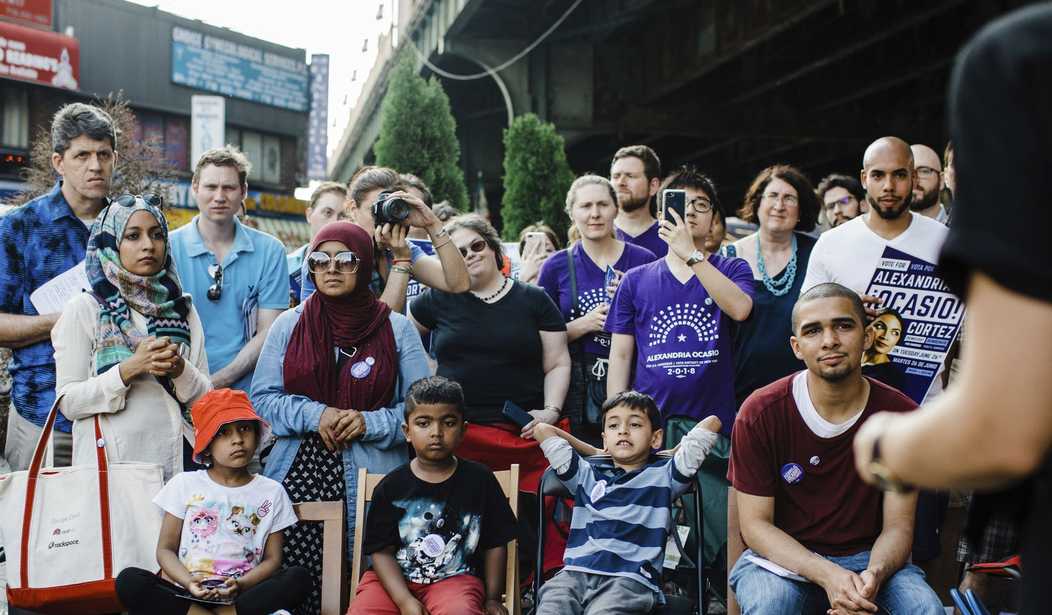In the 1980s, Ronald Reagan and other conservatives were so successful at muddying up the label “liberal” that leftists at the time were forced to self-identify as “progressives.”
But that wasn’t particularly satisfying. After all, there had already been a “progressive movement” in America at the turn of the 20th century. Leaders like California Gov. Hiram Johnson, Wisconsin Gov. Robert La Follette, and President Teddy Roosevelt carried out a revolution that, for good or ill, changed America forever.
The ratty, scruffy-looking modern “progressives” bore no resemblance to the courageous reformers who preceded them. But they appropriated the name nonetheless, even though their label should have been closer to “fascist” than “progressive.”
Related: Exposed: Progressive Democrats’ Totalitarian Obsession in COVID Crisis
Now, the “progressive” label is wearing thin as voters have begun to identify “progressive” with “crazy.” So, many progressives believe a rebranding is in order.
While some high-profile contenders still use the moniker, others want to be thought of in different terms. Pennsylvania’s Lt. Gov. John Fetterman, who’s seeking the party’s nomination for a coveted Senate seat, prefers a different word: populist.
He’s not alone.
Veteran Lucas Kunce, who’s also angling for a Senate primary win in the race to replace retiring Republican Sen. Roy Blunt in Missouri, similarly identifies as a populist and says he’s part of a “people-powered movement.” His fundraising page offers a variety of credentials: Marine, antitrust advocate and Democrat — but not progressive.
The problem for these liberal/progressive/populists is that the solutions they are offering the voters haven’t changed in 40 years. There is nothing “populist” about statist solutions that dictate what people can or should do — no matter how they disguise it as “people power.”
A source close to another self-styled Midwestern populist described “two lanes of populism” taking hold as contenders look for more accurate ways to portray what’s unfolding in their regions. Voters in these areas, this person said, aren’t consumed with the detailed policy proposals that excite many national progressives in Washington, D.C., and prefer an anti-establishment, against-the-system sentiment.
“Some are just using it as a tactic. And look, anything it takes,” the source said. “But then I think there are some states where there’s actually a populist hint in it. There’s more of a grassroots populism that’s felt as the base of society.”
If you think that strategy sounds like Trump in 2016, you’re correct. Trump’s ability to tap into that rural and Middle-Class discontent gave him the victory in 2016. And as these Democratic candidates are demonstrating, it’s still a potent strategy in 2022.
The toxicity of the “progressive” label depends a lot on where it’s being applied. A progressive candidate in rural Georgia or South Carolina would have little chance against a conservative running in those regions. On the other hand, running as a “progressive” in many urban areas is less of a drag on getting votes.
During the entire time that “liberals” were becoming “progressives” and now “populists,” there have always been only “conservatives” on the right. That implies there’s something good and strong about the conservative label. Even today, with efforts to smear the entire right because of the actions of a few knuckleheads on January 6, there has been no indication that any member of Congress or candidate is contemplating changing their label from “conservative” to anything else.
Why would they? Changing their label won’t change who they are or what they believe. That’s a lesson the radical left could learn before their next label change after their defeat in 2022.









Join the conversation as a VIP Member